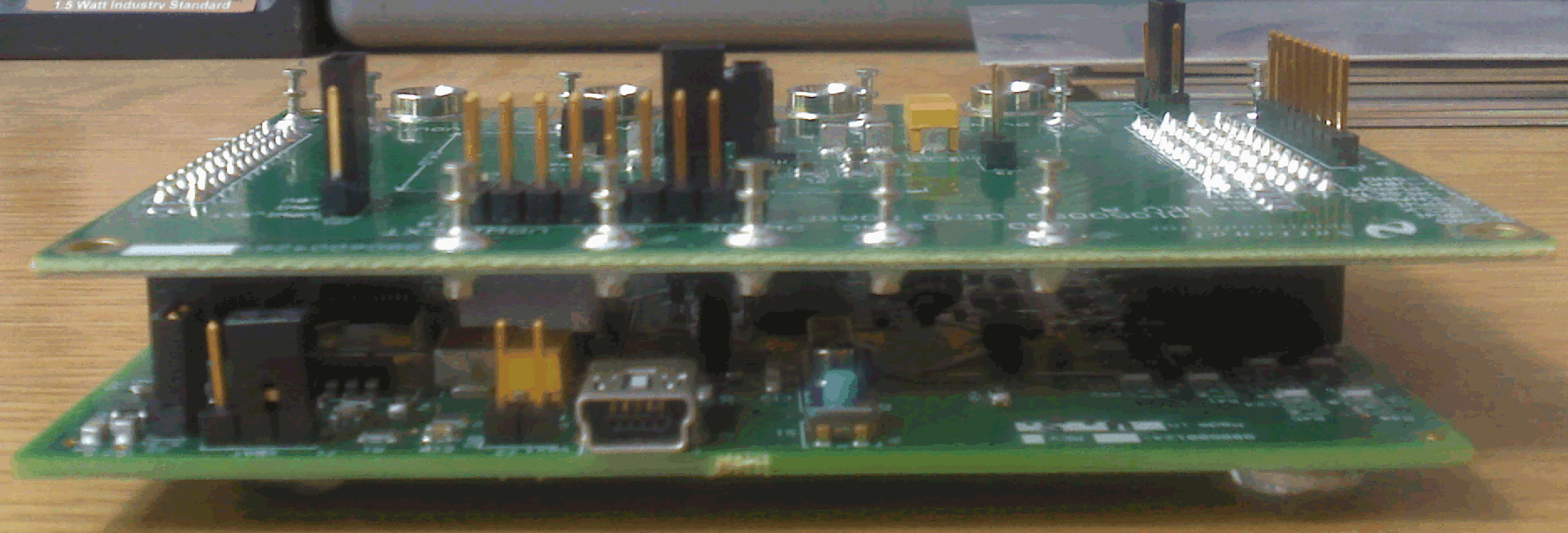SNVA453B August 2011 – January 2022 LM10500
- Trademarks
- 1 LM10500 Overview
- 2 Adaptive Voltage Scaling Technology
- 3 Features
- 4 Applications
- 5 Evaluation Kit Overview
- 6 Typical Application Circuit
- 7 Connection Guide
- 8 Operation Guide
- 9 User’s GUI for LM10500 Evaluation Board
- 10Typical Performance Characteristics
- 11Evaluation Board Schematic
- 12Evaluation Board Bill of Materials
- 13Evaluation Board Layout
- 14Revision History
8.2 PWI Communication Using USB2PWI Board
The unique feature of the LM10500 is close-loop adaptive voltage scaling (AVS) capability. The LM10500 operates cooperatively with PowerWise AVS-compatible ASICs, SoCs, and processors to optimize supply voltages adaptively over process and temperature variations. To simplify the evaluation of the AVS functions in the LM10500, the evaluation board is designed to operate with the USB2PWI interface board (included in the evaluation kit). With the USB2PWI board, PWI registers and LM10500 operating states can be controlled by a PC through a simple register-based graphical user interface (GUI). Connect the LM10500 evaluation board on top of the USB2PWI board by J4, J5 and J6, as shown in Figure 8-1, then connect the USB2PWI board to a PC with a 5-pin mini USB cable (included in the evaluation kit).
 Figure 8-1 Connecting the LM10500 Evaluation Board to the USB2PWI Interface Board
Figure 8-1 Connecting the LM10500 Evaluation Board to the USB2PWI Interface BoardThe USB2PWI board is powered by the USB port. It generates a 3.6-V VBAT. VBAT is used on the evaluation board to provide the on board 2.5 V, which can be used to power VPWI. VBAT can also be connected to PVIN to power the LM10500 when no other power supply is available, but the loading capability is limited on VBAT. If available, PVIN should be powered by a bench supply with sufficient voltage and current ranges.